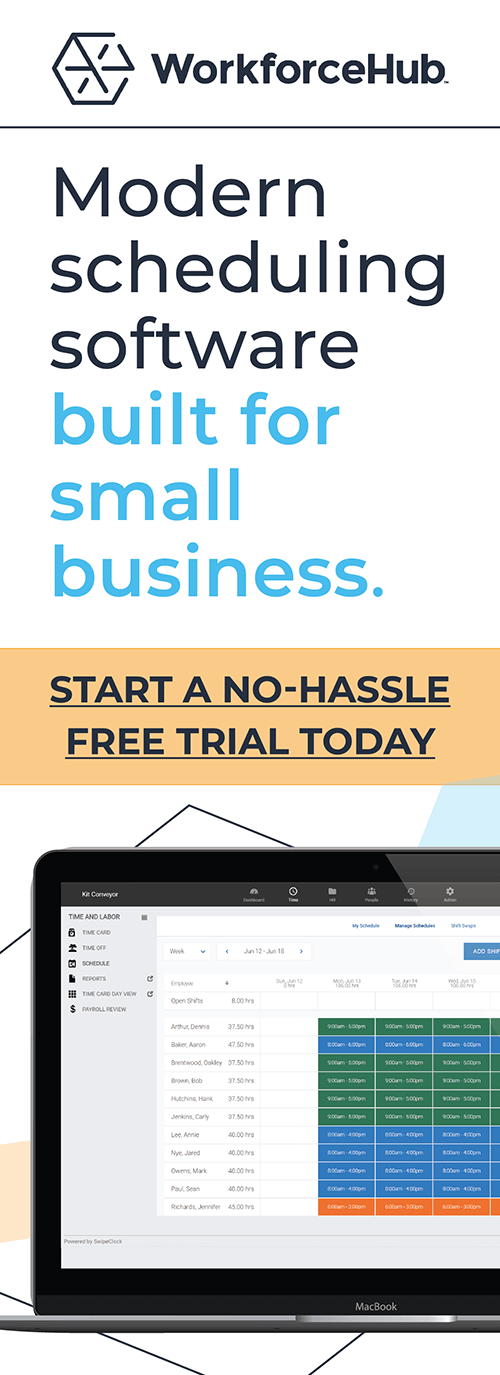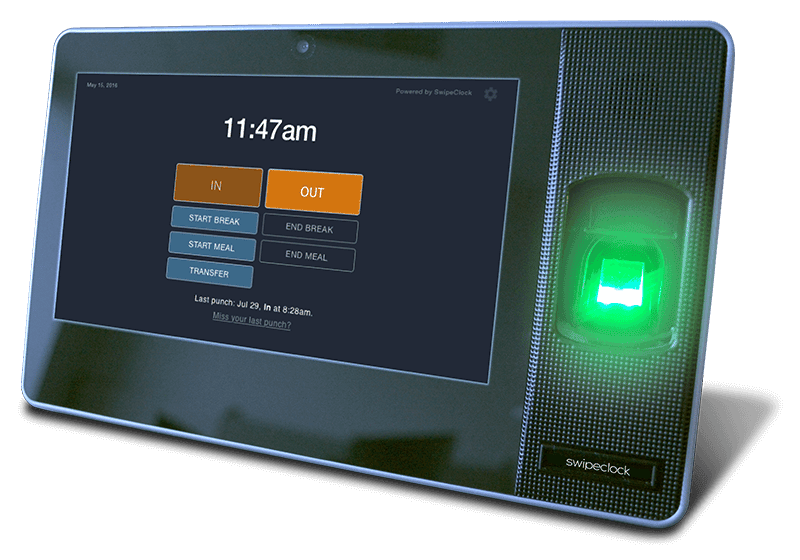If You Neglect Workforce Management, This Could Happen to You

What affects business success?
Talent,
Ideas,
Product,
Customer Service,
Mission?
While these are all vital components to the success of a business, there is one aspect that is too often neglected.
Do you know what it is?
Neglecting workforce management can cause great obstacles to your business success. This can affect many areas of your business.
Manual scheduling or time cards translates to a clog in your effectiveness
Becca manages a large shipping company. It’s 4:40 and she’s at her desk with a calculator, an employee skill chart, and paper. She has to create the schedule and it’s due today. Otherwise, her company will be fined for violating her city’s advanced scheduling law. Plus, they will have to pay any affected employees a premium pay. She’s racing to make it out the door to her sister’s birthday party. The big 30.
Bella’s company is divided into three sections. The loading docs, the drivers, and the on-location staff. Employees are scheduled for specific sections, depending on their qualifications, tenure, and availability.
The loading docs are getting a big shipment in from overseas. 500 crates must be unpacked, sorted, prepped, and loaded into the correct trucks. Looking at her chart, she schedules an extra 10 people to work 5- 8-hour shifts. “Ok. Next,” she says out loud.
The drivers have a typical week ahead. She quickly charts the usual routes and schedules.
Next, she looks at the on-location staff. This week, the phones and most of the offices are getting moved. She’s got to make sure there are people at both locations to answer customer queries, help move the office supplies, and reset up in the new location. However, because of the move and several variables, Bella has to make sure that minor employees are scheduled away from the mess.
She studies the variables intently, a headache forming. After a while, she sighs and puts down her pen. “Finally. I think I have it.”
She puts away her calculator, chart, and pencil. She grabs the schedule so she can make a copy and post it. That’s when she notices her scribbled note from earlier in the day. She had completely forgotten.
Charli is out on Tuesday. Larry is out on Thursday.
This throws off her entire schedule. She looks at the clock. It’s nearly 6. Her sister’s party starts in 10 minutes. This is going to take her at least an hour to fix.
Bella groans. She hates being flaky but has no choice but to text her sister and ask her to lunch the next day instead.
It’s too bad that Bella’s company doesn’t realize how often this happens. And, that even one of Bella’s “fast” weeks at scheduling would look like a rowboat racing a speedboat.
Fortunately, the solution is easy: a workforce management system that can balance all the variables in place.
Compliance Violations Mean DOL and other penalties
Mel is the chief of staff at a hospital. In front of him, Sofia, from HR, and Zach, from legal are frowning.
“There’s been a complaint to the Wage and Hour Division,” says Sophia.
“An employee didn’t get paid correctly,” Zach adds.
“He’s missing the correct overtime pay and some of his hours,” Sophia answers Mel’s shocked expression.
“Really?” Mel sighs and rubs his forehead.
“We need this information for court,” Sofia states, handing Mel a spreadsheet with 53 line items. “Please.”
Mel looks at the spreadsheet. “Some of this information is from three years ago! I don’t have all of this info.”
Zach sighs. “The less you have, the less likely we are to win this case. The law states that without evidence to the contrary, we are assumed to have violated the regulations. We are facing thousands of dollars in punitive damages and even more in fines to the state.”
Sadly, this happens too often. Most labor laws assume employer guilt unless the employer can show records to the contrary.
Fortunately, employers who use SwipeClock tools can pull up information because it’s automatically retained. It would be easy to show that the employee in question did actually leave work early and requested a 2-month flexible work schedule because of personal circumstances. (Without those records, no one remembers this detail).
Unfortunately, three years later, neither the employers or the employee’s manager remember these details.
Costs Add Up
Gladys manages a bank branch. It’s Tuesday and she’s looking for the time-off request from Jared. He wants to take 5 days off.
“Here it is,” Gladys says.
She knows Jared’s been an employee longer than Glady’s three years. She assumes that he has the time available and initials an approval on his request.
It doesn’t take her too long to adjust the schedule.
Nikki gets two extra shifts. She worked only 21 hours this week, but next week she’ll have 32 hours.
Ervis also gets two extra shifts so he’s up to 5 shifts.
Gladys glances at it and nods. She submits the schedule and heads home. What she doesn’t know is that her schedule is broken.
Here’s the problem:
Jared has already used a couple of vacation days and he hasn’t accrued enough more. He only has 3 more accrued days at this point in the year.
Nikki has FMLA leave. She is working an adjusted schedule of only 20 hours a week while she recovers from a serious medical condition.
Ervis, who is always happy to make more money, failed to mention that his other 3 shifts are double shifts. He’s working nearly 11 hours on each shift. He’s going to be entitled to overtime pay!
Employee Morale
Ben clocks out and heads directly from work to pick up his girlfriend. He’s glad that it’s not only Friday but also payday. Tomorrow is their 6 month anniversary and he’s got a special date at an expensive restaurant planned. Tonight, they are hanging out with friends.
On their way, Ben stops at an ATM to grab a little cash. Checking his receipt, his quick intake of breath notifies his girlfriend of the issue.
“Not again?! She asks and exclaims.”
“Yes, my paycheck isn’t complete,” Ben mutters something else under his breath. “This is the third time in two months they’ve skipped part of my wages! Last time it took me an hour to get it straightened out and I had to get my manager involved! I don’t have time for this!”
“Maybe you should look for a new job,” Ben’s girlfriend suggests.
“Or call an attorney,” Ben responds.
Mistakes like these not only put the employer at risk of DOL violations, but also erode employee trust and morale. It is more than likely that Ben will share his story with other co-workers, which destroys effectiveness and creates an environment of discontent in the workplace.
Unless corrected, the problem will continue to escalate.
Fortunately, automated time clocks seamlessly solve this problem. No longer do payroll employees strive to read manual time clocks. When employees fail to clock in, alerts can be programmed to notify the employee. This eliminates forgetful, or distracted employees who forget to clock in..
SwipeClock’s time and attendance system integrates seamlessly with other HR and Payroll software such as BambooHR, Thomson Reuters, IRIS, Evolution, and dozens of other programs.
Give us a call. In a year, you’ll be glad you started today and will wish you started last year!
Let SwipeClock Help
Human Resources and Payroll departments have many more effective roles than simply pushing paper and adding up timesheets.
In addition, compliance shouldn’t have to be overwhelming. These employers usually have local, state and federal labor laws to follow.
These laws include the Federal Overtime Laws, the Family Medical Leave Act and any other national or local laws that are enacted. SwipeClock provides a comprehensive array of workforce management and time tracking tools that can help businesses to more easily stay in compliance with local and national laws.
Records are effortlessly kept for years and accrual is automatically tracked and reported to employees according to the state and city laws. Additionally, with geo-timekeeping clocks, businesses can effortlessly track time worked in specific cities to ensure compliance.
Written by Annemaria Duran. Last updated on March 21, 2018
Simplify HR management today.
Simplify HR management today.
The Importance of Facial Recognition Time Clocks for Small Businesses
Updated April 17, 2024 A facial recognition time clock is no longer a luxury. Advanced biometric clocks are a must-have for today’s workplaces. A facial recognition time clock is the best technology for tracking employee time. It solves a multitude of problems employers are facing with their workforces. What is a Facial Recognition Time Clock?…
Read MoreEmployee Time Clock Hardware: Which is the Best?
Updated April 9, 2024 What is employee time clock hardware? An employee time clock is a hardware device for tracking work time. To use it, employees ‘punch’ in/out or ‘clock’ in/out. The term ‘punch in’ stems from early employee time clock hardware that required a physical card. With a traditional mechanical time clock, the process…
Read More




